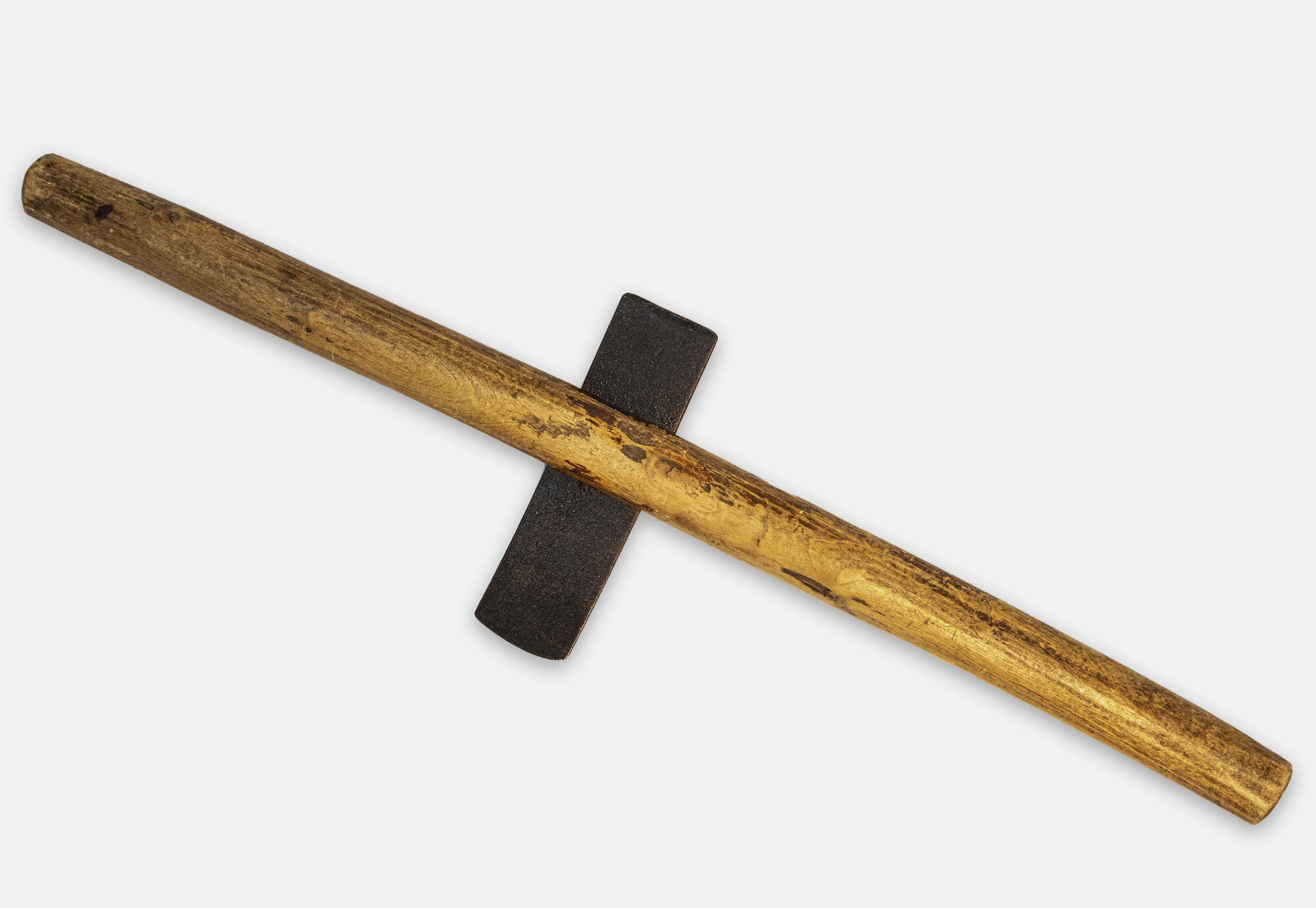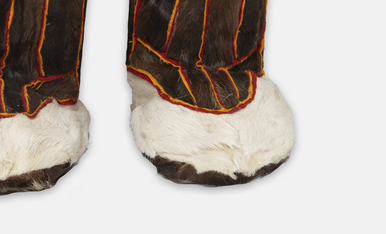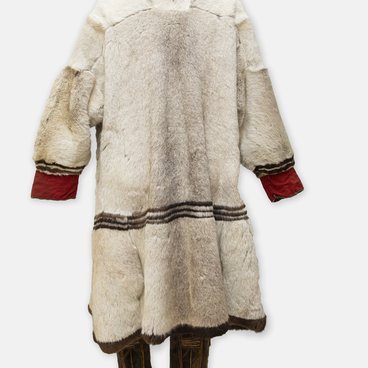Reindeer hides are the main material used by the peoples of the North for sewing clothes, bags, toys, household items, and walls of a portable dwelling — a chum. After an animal is skinned, the hide quickly begins to decompose, so it should be processed immediately. Various dressing techniques are used depending on whether the hide will be used for summer or winter, fur or leather clothing, cult objects, children’s accessories, shoes, or hats.
Traditionally, Nenets women were the ones dressing hides and sewing clothes. The working tools remained unchanged for centuries: these were large and small wooden boards and scrapers of various shapes.
The Nenets use various parts of hide, including the hide from the forehead, knees, and hoof brushes. The materials also vary in texture, from the delicate skins of young deer to the rough winter hides of wild adult animals. There are different scrapers for each type of hide. For example, a tool with one working end is used for kamus — hide from the lower leg of deer used to make Nenets shoes.
A Nenets hide scraper is called a “yesey”. It is an iron blade mounted across a wooden handle. The tool from the collection of the Nenets Museum of Local Lore has an iron plate fixed with wooden wedges and a nail.
While working with a scraper, a woman holds it using two wooden handles with both hands and begins to dress the skin with the blunt end of the scraper. The process involves greasing and rolling and consists of several repeated cycles. During the final stage, the scraper’s blade is constantly sharpened with a whetstone.
A scraper was one of the primitive working tools of early people. It appeared in the Upper Paleolithic, about 50,000 years ago. Before that, people used fingernails and teeth to separate scrapings, tendons, meat, and fat from the inner side of the hide.
Early people mostly used scrapers to dress hides
and skins of wild animals for making clothes, tent covers, and bags. Scrapers
could also be used to process wood and bone. They quickly wore out and fell
into disrepair, but their simple design made them easy to replace.




